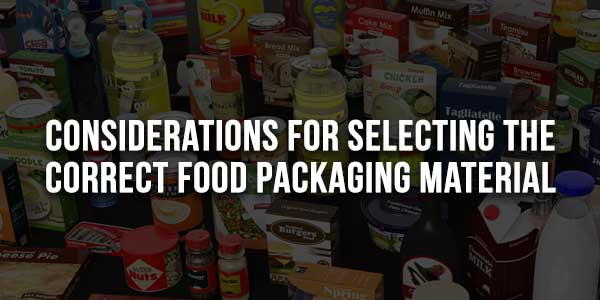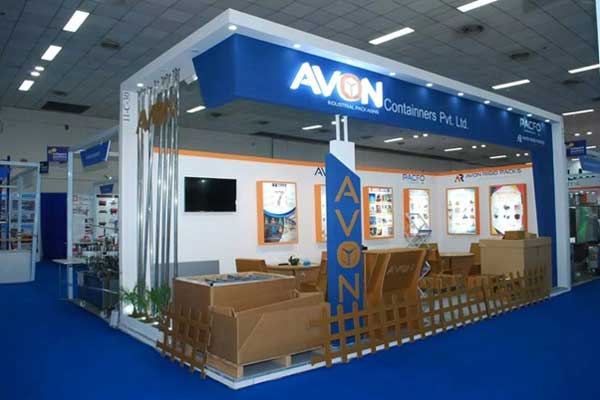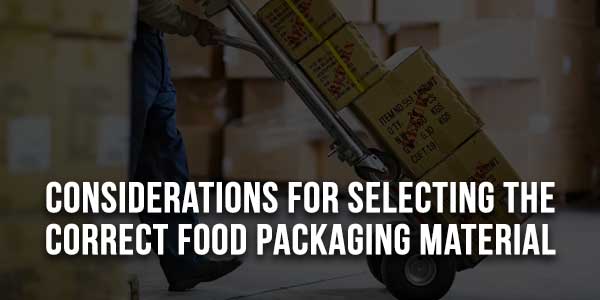
Food packaging is more than just a visually appealing covering for the product. It is essential to guarantee the security and caliber of the food we consume. In actuality, food packaging is essential for maintaining freshness, avoiding contamination, and lengthening shelf life.
Envision a society devoid of packing. By the time fruits and vegetables make it to the store shelves, they would be smashed and crushed. Poultry and meat would quickly deteriorate due to bacterial exposure.
Cereal and chips, which are non-perishable, would even lose their crunch and become stale. Food is kept fresh and safe for ingestion by the protective barrier that packaging provides.
Additionally, packaging has a significant role in marketing and branding. Packaging that is appealing and eye-catching can draw customers in and increase the likelihood that they will buy a product.
Important details like ingredients, nutritional value, and allergen warnings can also be communicated through it. We would be placing ourselves in danger of consuming tainted and unhealthy food if our food supply chain was not properly protected by packaging.
The next time you grab a snack or a meal, keep in mind that the packaging plays a crucial role in guaranteeing that the food is tasty, safe, and fresh.
Table of Contents
Considerations For Selecting The Correct Food Packaging Material:
The following is a carefully compiled list of important considerations for choosing food packaging materials:
1.) Safety:
When it comes to food, the material used for packaging must be safe. The material mustn’t interact negatively with food or release any dangerous elements into it. Furthermore, the food should not be contaminated by bacteria, fungi, or other germs thanks to the packaging material.
2.) Shelf Life:
Food’s shelf life is an additional crucial factor. For as long as practicable, the food’s quality and freshness should be preserved by the packaging material. This can be accomplished by choosing a material that won’t deteriorate or spoil over time due to exposure to air, moisture, and light.
3.) Sustainability:
As worries about how packaging affects the environment grow, sustainability is starting to play a bigger role when choosing materials. Think about selecting packaging materials composed of renewable resources, recyclable materials, or biodegradable materials. Additionally, energy and transportation expenses can be decreased with the use of lightweight and effective packing.
4.) Cost-Effectiveness:
The price of the packing supplies should also be taken into account. The material ought to be reasonably priced and fit into the product’s budget. Higher initial costs might occasionally be justified if they lead to better safety, a longer shelf life, or a less environmental effect.
5.) Usefulness:
Lastly, one should take into account the packing material’s usefulness. It must be simple to handle, store, and operate. The material should also be able to tolerate any necessary processing or handling, as well as be compatible with the production and distribution process.
Why Choose Avon Packaging?
Avon Packaging is a strategic partner that cares about its clients’ success in addition to being a supplier of packaging. Avon Packaging is unique because of its consistent commitment to quality, innovation, and customer service. Avon Packaging collaborates closely with customers to provide specialized corrugated solutions that not only meet but surpass expectations from design to delivery.
1.) Standards & Regulations For Food Packaging:
Standards and laws about food packaging are essential to guaranteeing the safety and superior quality of the goods we eat.
The purpose of these food industry standards and regulations is to safeguard consumers against health hazards and guarantee that the materials used in Buy Packaging Material Online do not hurt the food that they contain. The following are some of the most significant laws and guidelines about food packaging:
Under the Federal Food, Drug, and Cosmetic Act, the FDA controls materials used in food packaging. The FDA makes sure that materials used in food packaging are safe, suitable for the purpose for which they are designed, and do not contaminate food with hazardous substances.
2.) European Union (EU) Regulations:
The EU has established guidelines for materials that come into contact with food, including packaging. A list of approved compounds that can be used in food packaging has been created by the EU, and the materials used in packaging must adhere to strict migration limitations.
3.) Good Manufacturing Practices (GMPs):
GMPs are a collection of rules that specify how food packaging materials are made. To guarantee that packing materials are produced consistently and safely, they include documentation requirements, quality control standards, and hygiene guidelines.
4.) Food Packaging Is Governed By Several International Organization For Standardization
(ISO) standards, such as ISO 9001 for quality management systems and ISO 22000 for food safety management systems. Guidelines for the manufacture, processing, and storage of materials used in food packaging are provided by these standards.
5.) Hazard Analysis & Important Control Points (HACCP):
HACCP is a food safety management method that identifies important control points to avoid contamination and highlights possible hazards in the food production process. To guarantee the safety and quality of food packaging materials, HACCP might be used.
The Effect Of Food Packaging On Freshness And Shelf Life:
Food shelf life and freshness are significantly impacted by food packaging. The following are some ways that food quality is impacted by packaging:
Protection From Oxygen:
Food deterioration is mostly caused by oxygen, which breaks down proteins, lipids, and carbs. Food shelf life can be increased by using oxygen-barrier packaging materials, such as metalized films and some polymers, which reduce the quantity of oxygen that comes into contact with the food.
Protection From Moisture:
Because moisture fosters the growth of bacteria and mold, it can also lead to food spoiling. Moisture-barrier packaging materials, like laminated films and aluminum foil, can
Defense Against Light:
Food can undergo chemical reactions from light that can result in nutrient loss, bad taste, and discoloration. Opaque or UV-absorbing packaging materials can help shield food from light and preserve its quality.
Packaging With A Controlled Atmosphere:
To reduce the rate of food spoiling, controlled atmosphere packaging, or CAP, modifies the air composition around the food within the package. Adding gasses like carbon dioxide or nitrogen, or employing vacuum packaging, are two ways to accomplish this. Food can have a much longer shelf life because of CAP.
Freshness Indicators:
Certain packing materials have freshness indicators that tell you how fresh the food is, including gas or time-temperature indicators. This can assist customers in deciding when food should be thrown out and when it’s still okay to eat.

Innovations In Food Packaging: Current Patterns And Upcoming Advancements:
New trends and advancements in food packaging are continually surfacing, resulting in a continuous evolution of innovation. The following are some of the newest and upcoming trends in food packaging:
1.) Sustainable Packaging:
There’s a growing need for environmentally friendly packaging solutions that cut down on waste. This covers the use of recyclable and biodegradable materials as well as reusable packaging.
2.) Active Packaging:
To preserve the food’s quality and lengthen its shelf life, active packaging materials are made to interact with the food within the container. This covers the application of antibacterial agents, moisture absorbers, and oxygen absorbers.
3.) Intelligent Packaging:
This technique uses technology to give consumers extra details about the product, like its ingredients, nutritional value, and expiration dates. RFID tags, QR codes, and other digital technologies are examples of this.
4.) Edible Packaging:
As a sustainable and waste-reducing substitute for conventional packaging, edible packaging materials—such as films manufactured from seaweed or other natural materials—are being developed. These products can aid in lowering the quantity of packaging waste produced and are safe for ingestion.
5.) 3D Printing:
Customized packaging solutions that are suited to the unique requirements of a specific food product are being made via the use of 3D printing technology. This can include containers that are made to suit the meal perfectly or containers with special characteristics like integrated spaces for sauces or other condiments.
Food Packaging’s Use Of Branding:
Food packaging relies heavily on branding to convey a product’s distinct value proposition to customers and set it apart from the competition. The following are some ways that food packaging is impacted by branding:
1.) Brand Recognition:
Consumers can more quickly and easily recognize and identify a product when it has a strong brand. Using eye-catching colors, logos, and other branding components on the box can help achieve this.
2.) Product Differentiation:
A powerful brand may make a product stand out and set it apart from rivals in a congested market. Product features, messaging, and distinctive packaging designs can all help achieve this.
3.) Emotional Connection:
Brands that connect with customers on an emotional level can foster loyalty and trust. This can be accomplished by using packaging that exudes quality and authenticity as well as text that speaks to the values and ambitions of the target audience.
4.) Premium Positioning:
A product that has a strong brand can be positioned as a high-end or premium offering, which helps to support a higher price point. High-end components, elegant designs, and messaging that highlight the product’s distinct value proposition can all help achieve this.
5.) Consistency:
When a product line’s branding is consistent, it can help to give it clarity and unity, which makes it simpler for customers to comprehend and browse the products. Consistent messaging, branding components, and packaging designs can help achieve this.
Typical Errors in Food Packaging and How to Avoid Them
1.) Using The Wrong Packaging Material:
To preserve their quality and safety, various food products require different kinds of packaging materials.
Foods that are sensitive to oxygen, for instance, need packaging with strong oxygen barrier qualities, whereas whole foods with a high moisture content need packaging with strong moisture barrier qualities.
Selecting the appropriate packing material for every product is crucial to prevent spoiling and contamination.
2.) Inadequate Sealing:
To avoid contamination and guarantee the food product’s freshness and quality, a suitable seal is essential. Inadequate packaging machine settings, inferior packing materials, or human mistakes can all lead to incorrect sealing. It is important to regularly check the seals on the packaging and adjust machine settings as necessary to
3.) Varying Packaging:
Customers may become confused by inconsistent packaging, which also makes brands less recognizable. To establish a unified and identifiable brand, it’s critical to keep packaging design, size, and branding components consistent throughout all product lines.
4.) Transparency Deficit:
Today’s consumers want to know what ingredients are in the food goods they buy and are becoming more concerned about food safety. To increase consumer pleasure and trust, food packaging must provide accurate and clear information on ingredients, nutritional value, and allergens.
Conclusion:
To guarantee food products’ safety, quality, and shelf life, proper packaging is crucial. Food can be kept fresh and flavorful while being shielded from infection and spoiling by using the proper packaging.
Furthermore, food goods’ Packaging Material Online is essential for branding and marketing since it communicates its distinct value proposition to customers and helps set them apart from the competition.
It’s critical to take into account the elements that affect food packaging, including laws, the choice of materials, and the application of cutting-edge technology. Food manufacturers may produce goods that are not only safe and of the highest quality but also enticing and compelling to customers by avoiding common packaging errors and making the necessary investments in packaging.

 About the Author:
About the Author:
















Be the first to write a comment.